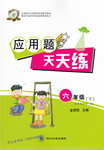题目内容
A group of students in Japan have created a realistic robot baby to encourage young people to start planning a family so as to increase the country's birth rate. The automated (自动化的) doll developed at the University of Tsukuba,called Yotara,laughs and "wakes up" when a rat?tle is shaken.
He can become angry and sleep like a real baby and he smiles when his stomach is pressed. The robot can also sneeze and have a running nose,thanks to a heated water pump system. The students of the Graduate School of Comprehensive Human Sciences at the University created the robot last year with touch sensors. A projector sends the facial features onto a warm silicon bal?loon which makes up Yotara's face. The robot's facial expressions and body movements change according to pressure applied to different parts of its body.
The information collected through touch sensors under the silicon skin is processed by a special programme. It then changes the baby's expression projected onto the balloonface from behind. There is a hat on the robot's head and a colourful blanket on his limbs which simulate moving from side to side with the help of a motor. " We wanted to create a new type of robot that is soft,pretty and attractive," said project leader Hiroki Kunimura.
"We'd like people to experience the innocent,joyful expressions of typical small babies. Through this experience,it would be great if some people started feeling that they wanted to have their own baby,if they started feeling that working is not everything."
Japan's birth rate is among the lowest in the developed world at 1. 37% , compared to 2. 12% in the United Stated and 1. 84% in Britain. According to a ministry of labor and welfare report,Japan is facing a serious economic problem with over a quarter of its citizens expected to be aged over 65 by 2015. The population is expected to shrink by a third within 50 years if the birth rate does not increase.
( ) 1. What is the student's purpose of creating such a robot baby?
A. To help the old people who live alone.
B. To give small children some pleasure.
C. To comfort lonely young people.
D. To increase the population of Japan.
( ) 2. From this passage we learn that Yotara .
A. can react to what you say to him
B. is controlled by pressure applied to him
C. shows no human emotions
D. can cough and have a runny nose
( ) 3. What's the new type of robot like in Hiroki Kunimura's mind?
A. It can do everything for humans.
B. It is clever,humorous and loyal.
C. It is gentle,lovely,and smart.
D. It makes humans happy.
( ) 4. What can we infer from this passage?
A. Many young people in Japan don't want to get married.
B. There may be a lack of workers in Japan in the future.
C. The lifespan of Japanese people will decrease in the future.
D. The birth rate of Japan will start to increase slowly soon.
1-4 DBCB
A篇:日本的人口出生率在发达国家中是较低的,因此为了增加本国人口,日本的一些学生设计了一种新型机器人。
1. D细节理解题。根据第一段"...to encour?age young people to start planning a family so as to increase the country's birth rate"可知,答案为 D.
2. B推理判断题。根据第二段"...according to pressure applied to different parts of its body." 可推断,答案为B.
3. C细节理解题。根据第三段"We wanted to create a new type of robot that is soft,pretty and attractive."可知,答案为 C.
4. B推理判断题。根据末段"...over a quarter of its citizens expected to be aged over 65 by 2015. The population is expected to shrink by a third within 50 years if the birth rate does not increase."可推断,答案为B.

 应用题天天练四川大学出版社系列答案
应用题天天练四川大学出版社系列答案